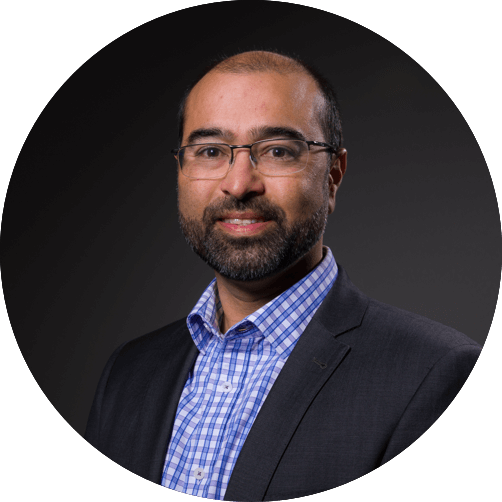Problems after SIPS/SADI Duodenal Switch Surgery
There are no ideal and perfect bariatric procedures and no one fits all approach. Each procedure has it’s pros and cons including different outcomes, risks and side effects and must be considered taking into account each patient’s individual circumstances.
Which problems may arise after the SIPS/SADI Duodenal Switch procedure?
Staple line leak can occur along the sleeve gastrectomy component. The outside curve of the stomach is removed using a special stapling device. Three rows of tiny metal staples hold the stomach together whilst it fully heals which usually takes a few weeks.
Anastomotic leak can also occur from the join between the duodenum and more distal small bowel.
If a section of the staple line doesn’t heal properly, it can break down resulting in a hole in the stomach much like a ruptured ulcer with leakage of stomach contents into the abdominal cavity.
"These can be a life-threatening complications if not recognised early and appropriately managed. There are many factors that affect the risk of a leak including the expertise of your Surgeon and issues that impair the healing process including smoking, poorly controlled diabetes and immunosuppressive medications. Due to the high pressure within the narrow stomach tube, managing sleeve leaks can be extremely difficult."
There is no single effective treatment for leaks which may require a variety of endoscopic, surgical and radiological procedures to manage and may require prolonged hospitalisations, intensive care and repeat procedures. Prevention is always better than cure. In expert hands and with thorough assessment and preparation the risk of a leak should be under 1 in 200. You should therefore choose your Surgeon wisely.
Problems after SIPS/SADI
Other potential problems after SIPS/SADI
Vitamin and mineral deficiencies can occur especially if you do not take the recommended daily supplements. These can have permanent and severe consequences over the longer term if ignored. After SIPS/SADI patients usually require daily a multivitamin (2 tablets), an addition fat soluble vitamins tablet (ADEK) and calcium and iron. The best way to avoid potentially serious problems is to follow the instructions provided by our dietitian and doctors including taking the recommended supplements every day and to have blood tests performed annually.
Protein malabsorption can occur with the intestinal bypass. After SIPS/SADI surgery patients require increased protein intake to meet their daily requirements (~80-90g/day). Protein supplements may be required to supplement the dietary intake. The best way to avoid potentially serious problems is to follow the instructions provided by our dietitian and doctors including taking the recommended supplements every day and to have blood tests performed annually.
Portal vein thrombosis is the formation of blood clots in the vein which passes from the bowel, under the stomach and to the liver. It is rare following other types of abdominal surgery but has been observed following sleeve gastrectomy in about 1 in 300 cases. It is thought that restricted intake, dehydration and a genetic susceptibility to clotting may contribute. Management usually requires blood thinning medication for up to 6 months whilst the clot(s) dissolve. You should advise your Surgeon if you have a history or family history of blood clots as an extended period of preventative blood thinning medication may be required following surgery.
Some degree of acid reflux is common following sleeve gastrectomy surgery. Creating a long narrow tube shaped stomach increases in pressure inside and can exacerbate existing reflux symptoms. We routinely assess all our patients with an endoscopy before any surgery so we can recognise and manage any potential issues. With SIPS/SADI the sleeve component is not as tight as compared to a primary sleeve gastrectomy procedure. This reduces the internal pressure which may decrease the chances of reflux.
"We use anti-acid medication eg Somac in all patients for a period of time after surgery because it helps with the healing process. Patients previously suffering with reflux symptoms may find the reflux improves with weight loss whilst those without prior reflux symptoms may require ongoing medication after surgery."
Reflux symptoms can often be managed with anti-acid medication but if reflux is troublesome or not controlled with standard anti-acid medication then further investigations should be done to determine the cause.
A hiatus hernia can develop after surgery where the junction between the food pipe (oesophagus) and stomach slides up above the diaphragm into the chest. Hiatus hernias decrease the effectiveness of the valve mechanism that protects against reflux. Previous hiatus hernias repaired with simple sutures can recur as tissues heal or weight is lost. Subsequent repairs will almost certainly require formal hiatal dissection and may ocasionally require reinforcement with mesh like we do for other hernias to reduce further recurrences.
Difficulty swallowing or tolerating solid foods is not expected after the initial recovery transition diet and may indicate a problem. This could include development of a hiatus hernia, twisting of the stomach, or a narrowing of the sleeve. Investigation may involve a gastroscopy, CT scan and/or contrast study to help diagnose the problem.
Stricture or narrowing in the stomach tube can be a technical issue in the creation of the sleeve or form as a result of inflammatory scarring. A stricture may be amenable to stretching using a balloon (Endoscopic dilatation) which often needs to be repeated several times. Resistant strictures may require surgery such as dividing adhesions or a stricturoplasty or occasionally a conversion to a gastric bypass.
Gastric volvulus or twisting of the sleeve component can occur as the attachments to the outside curve of the stomach have been removed. Some patients have very floppy, stretchy tissues which can increase the risk. With SIPS/SADI dividing the duodenum to perform the intestinal bypass allows the stomach tube to be straightened out which may make it less prone to twisting compared to primary sleeve gastrectomy. If it still occurs then further surgery may be required.
Bile reflux can be especially troublesome even in patients who haven’t had surgery. Bile is made in the liver and passes from the bile duct into the duodenum where it is usually carried downstream in the intestine.
"Occasionally bile goes the other way back up into the stomach where it can be very irritative to the stomach lining causing pain and exacerbating reflux symptoms. Unlike acid symptoms we don’t have very effective medications to manage bile reflux. If conservative measures are not successful, then revision surgery to prevent bile reaching the stomach and oesophagus may be the most effective solution."
Barrett’s Oesophagus is a change in the lining of the lower oesophagus in response to increased acid and/or bile reflux. It can lead to pre-cancerous changes (Dysplasia) and increases the risk of developing Oesophageal Cancer. Recent studies claim up to 15% of patients may develop Barrett’s Oesophagus after sleeve gastrectomy. This has not been our observation at Upper GI West. We have previously documented a Barrett's rate of 8% during pre operative work up of our patients. The overall risk of developing cancer is very low but the only way to identify Barrett’s Oesophagus is to have an Endoscopy and Biopsies taken of the lining of the oesophagus.
If you have confirmed Barrett’s Oesophagus then we recommend having repeat Endoscopy examinations every 3 years to monitor for further changes. In addition you should continue taking anti-acid medication which may help protect the lining. If pre-cancerous changes (dysplasia) are detected then we may be able to remove the affected area using an endoscope (Endoscopic mucosal resection) and/or treat the area with radiofrequency energy (HALO ablation) and we would instigate more regular follow up endoscopies as per recommended protocols.
Obstruction caused from previous gastric bands can cause permanent damage to the valve mechanism above the stomach contributing to ongoing reflux. If simpler methods such as medications and repair of hiatus hernia (if present) are not effective the conversion to gastric bypass may be required. This can also occur with minimiser rings/bands which some Surgeons are placing around the top of a gastric sleeve to try and increase weight loss and reduce weight regain. They can however cause similar problems to gastric bands and may require removal and further revision surgery.
A proximal pouch can occur if the top of the stomach hasn’t been fully mobilised before sleeving which is more challenging to do well after previous surgery such as gastric banding. Leaving a pouch at the top of the sleeve usually causes reflux and difficulty eating solid foods. The pouch will also dilate with time and may lead to weight regain. Excessive pouch at the top of a sleeve may be amenable to re-sleeving or plicating; occasionally the only option may be conversion to a gastric bypass.
Obesity is a risk factor for gallstones and gallbladder disease. Gallstones will often form during periods of significant weight loss. Patients with gallstones often develop pain under the right ribs, around the right side or back and is often exacerbated by eating. Once gallstones start to cause symptoms the gallbladder should be removed, or more serious complications can occur. Gallbladder removal can usually be done by keyhole surgery even after bariatric surgery. It usually requires an overnight stay in hospital.
Inadequate weight loss and/or weight regain can occur following any bariatric procedure. SIPS/SADI is the most powerful procedure that is being commonly performed today. It still requires patients to make permanent lifestyle changes including following healthy dietary principles and maintaining regular exercise/activity for optimal results. SIPS/SADI is major surgery which is not readily reversible or easy to revise. Before undertaking this surgery, it is important to address all issues that may have contributed to have the best chances of success. Regular support from our dietitians is recommended and additional psychology support may be required.
Hair loss is not uncommon during the first 6 months after surgery and is usually a temporary phenomenon associated with low energy intake. It is caused by many hair follicles going into "sleep mode" Its medical term is Telogen effluvium. Following the dietitian’s instructions to ensure adequate protein intake and taking the recommended vitamin and mineral supplements helps reduce hair loss and aids regrowth.
Excess skin can depend on many factors including the distribution of excess weight, amount of weight lost, age, elasticity of skin and muscle maintenance by adequate protein intake and appropriate exercise. Plastic Surgeons can offer removal of excess skin if required but it is recommended to wait for weight loss and body composition to completely stabilise before considering this option.
Why Upper GI West?
At Upper GI West all our surgeons are highly trained and experienced with stomach surgery for a whole range of conditions including obesity, reflux, hiatus hernias and cancer.
We take specific measures during the preparation and with the technical aspects of surgery to reduce the chances of having problems. However sometime issues can still arise.
We have the necessary expertise and skills to diagnose and manage the problems that may occur. If your original surgery has been performed by another surgeon we can provide a second opinion to help resolve ongoing issues.
We are all surgeon endoscopists and are best positioned to perform endoscopy to assess and treat issues related to Bariatric surgery.


